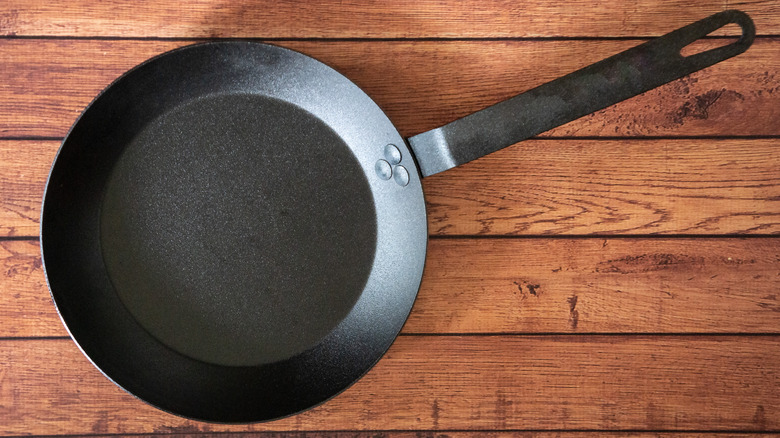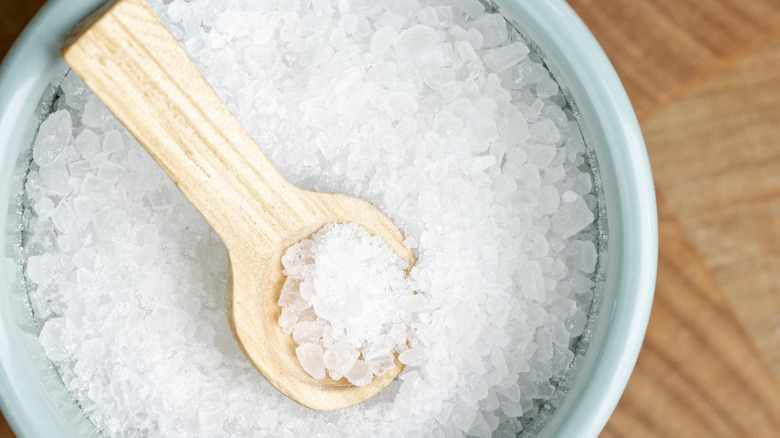How To Clean A Really Dirty Carbon Steel Pan
A cookware cousin of the trusty cast iron skillet, carbon steel pans share similar attributes, such as durability and versatility, and are safe for use on the stovetop, in the oven, and over a grill or open fire. However, carbon steel pans offer a few added perks — namely, they are much lighter, heat up more quickly, and feature a smoother surface, making them ideal for sautéing vegetables and whipping up the perfect scrambled eggs. Yet, like their cast iron counterparts, they are prone to heavy-duty messes, including tough, burnt-on residue. Luckily, dirty carbon steel pans can usually be cleaned with a bit of hot water and coarse salt.
Since soaking a carbon steel pan (or a cast iron skillet, for that matter) in water or placing it in the dishwasher can be a recipe for disaster — and lead to rust — the best way to remove stubborn food remnants is by first wiping them with a rag or paper towel. You can also boil a bit of water in the pan to help soften any food particles, allowing them to be scraped off with a metal spatula. If that doesn't do the trick, then it's time to call in the reinforcements: salt and a scouring pad.
The trick is to use coarse salt and hot water
If a thorough wipe-down or boiling water doesn't clean the carbon steel pan, you can restore it to like-new condition using salt. Simply pour about a cup of coarse salt (not to be confused with table salt) into the dirty skillet and scrub away the residue with a scouring pad before rinsing with hot water. To prevent rust, dry the pan immediately, either by wiping it with a clean rag or paper towel, or by heating it on low on the stovetop for a few minutes.
Perhaps the most important step is to then reseason the skillet, which helps create a natural nonstick surface and provides a barrier against moisture and humidity that can cause rust. To do this, pour a few drops of a neutral oil, such as canola, grapeseed, or vegetable oil, onto a clean kitchen towel and lightly grease the pan. Then heat it, making sure to rotate it over the burner for even distribution. The skillet will begin to smoke; once it stops, let the pan cool. Then, it's ready for cooking again.


